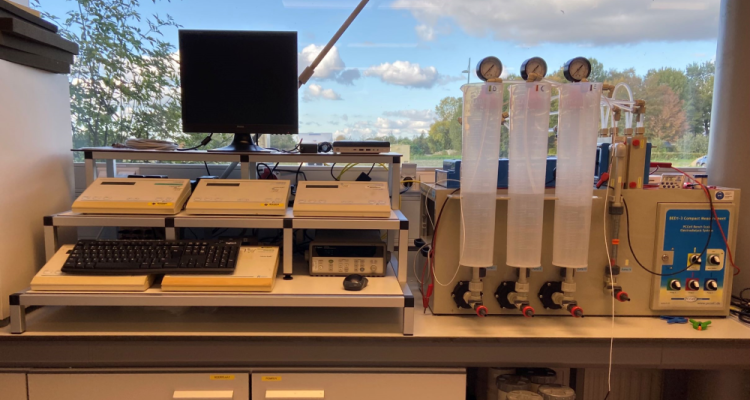
Project
Ion-selective Electrodialysis
In many sectors, there is an increasing interest to desalinate and re-use water due to the rising demand for limited freshwater resources. However, continuous use of water in closed cycle systems can result in accumulation of specific ions in the recirculating water. Especially in agricultural sector, accumulation of sodium ions (Na+) in the irrigation water negatively affects the soil permeability and limits crop growth, thus makes the water unusable in agricultural systems. In order to increase the potential for water re-use, it is important to develop desalination technologies that selectively remove specific ions from the solution.
Electrodialysis (ED) is an electrically driven membrane desalination technology, which has high potential to selectively remove specific ions from the solution. An ED cell consists of two electrodes and alternatingly placed ion exchange membranes between them. When electrodes are electrically charged, the salt concentration increases in each alternate cell due to the arrangement of membranes. Mass transport in an ED cell is the result of electromigration due to electrical forces, and diffusion due to the concentration gradient across membranes.
Technological challenge
Mass transport determines ion removal rate, quality of the desalinated water and ion selectivity of the ED process. In order to selectively remove undesired ions and recover valuable ones in the solution, ion transport mechanisms should be studied in detail. Several factors can be controlled in the ED system to influence the concentration gradients, thus the ion transport. The technological challenge is to modify these factors in a way to achieve specific ion removal considering membrane characteristics, individual ion properties and system operating conditions.
Methodology
In this project, we aim to study ion-transport controlling parameters to develop ion selective ED technology. For this purpose;
- A theoretical model describing ion transport through ion-selective membranes will be developed for multi-ionic solutions.
- Laboratory experiments will be performed in order to validate and improve the developed model.
- Ion selectivity of the ED process will be enhanced by influencing the concentration gradient between the diluate and concentrate compartments.
- Industrial applications of the developed selective ED process in food industry will be evaluated.